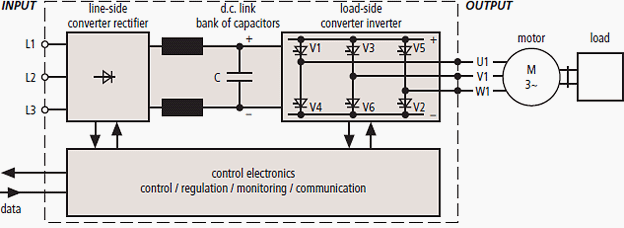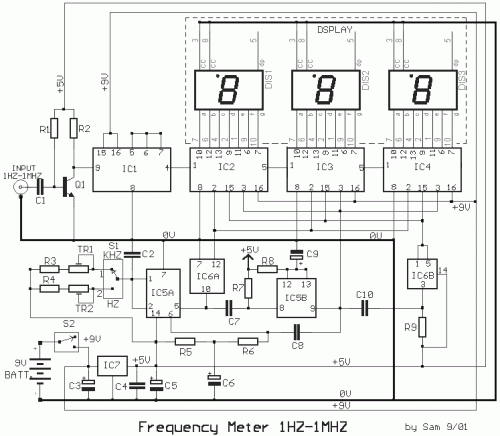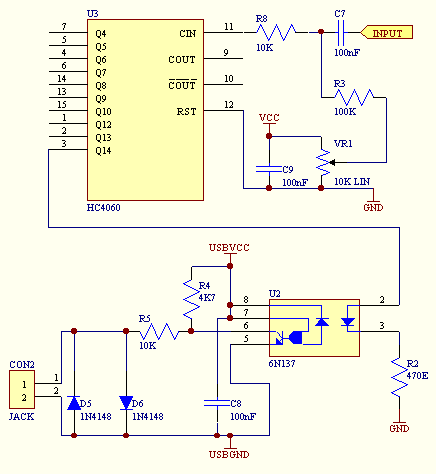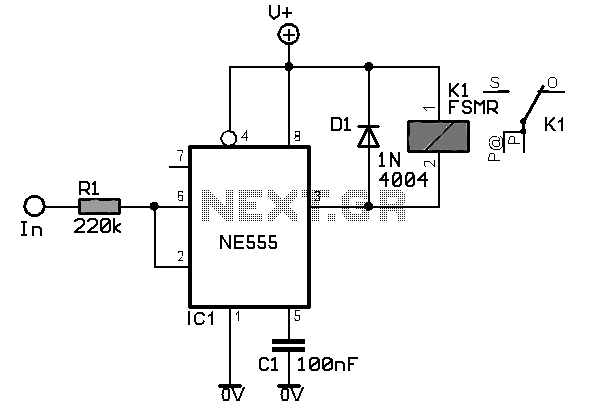
fabricate 835 ghz frequency synthesizer
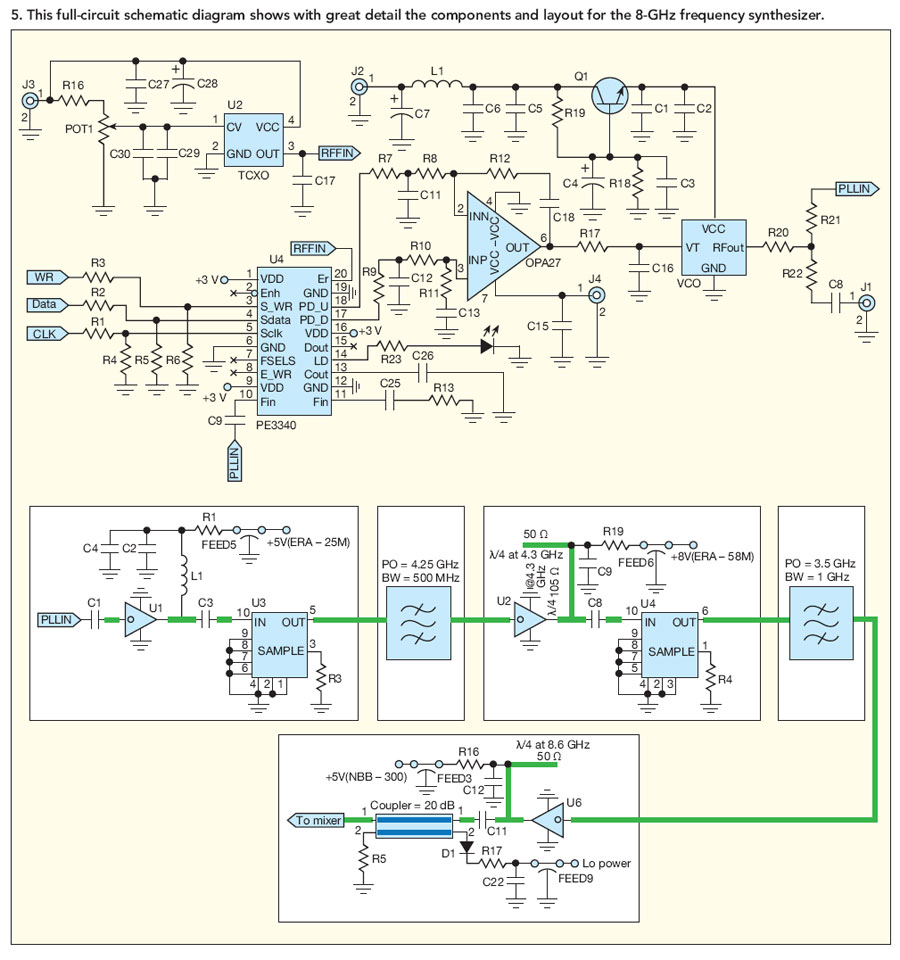
By developing a low-noise frequency synthesizer at 2 GHz and applying a pair of doublers, it is possible to achieve low-phase-noise outputs past 8 GHz for digital microwave radios.
The design of a low-noise frequency synthesizer operating at 2 GHz involves several critical components and considerations to ensure optimal performance, particularly in applications such as digital microwave radios. The synthesizer typically employs a phase-locked loop (PLL) architecture, which is essential for maintaining frequency stability and low phase noise.
The initial stage of the synthesizer consists of a voltage-controlled oscillator (VCO) that generates the 2 GHz signal. The VCO must be carefully selected or designed to minimize phase noise, as this characteristic is crucial for the overall performance of the synthesizer. The output of the VCO is then fed into a frequency divider, which reduces the frequency to a manageable level for the phase comparison process.
Following the frequency division, a phase comparator is used to compare the phase of the divided signal with a reference frequency, typically derived from a high-precision crystal oscillator. The output of the phase comparator generates an error signal that is used to adjust the VCO, ensuring that the output frequency remains locked to the desired frequency.
To achieve frequencies beyond 8 GHz, a pair of frequency doublers is integrated into the circuit. These doublers utilize non-linear devices, such as diodes or transistors, to effectively double the input frequency. The first doubler takes the 2 GHz output from the VCO and produces a 4 GHz signal, which is then fed into the second doubler to generate the final output frequency of 8 GHz or higher. The design of the doublers must also consider impedance matching and harmonic suppression to minimize unwanted spurious signals that could degrade the performance of the synthesizer.
The final output is characterized by low phase noise, which is essential for high-performance digital microwave radios. The careful selection of components, layout techniques, and filtering methods contributes to achieving the desired specifications for low noise and high stability, making this synthesizer suitable for various applications in telecommunications and radar systems.By developing a low-noise frequency synthesizer at 2 GHz and applying a pair of doublers, it is possible to achieve low-phase-noise outputs past 8 GHz for digital microwave radios.. 🔗 External reference
The design of a low-noise frequency synthesizer operating at 2 GHz involves several critical components and considerations to ensure optimal performance, particularly in applications such as digital microwave radios. The synthesizer typically employs a phase-locked loop (PLL) architecture, which is essential for maintaining frequency stability and low phase noise.
The initial stage of the synthesizer consists of a voltage-controlled oscillator (VCO) that generates the 2 GHz signal. The VCO must be carefully selected or designed to minimize phase noise, as this characteristic is crucial for the overall performance of the synthesizer. The output of the VCO is then fed into a frequency divider, which reduces the frequency to a manageable level for the phase comparison process.
Following the frequency division, a phase comparator is used to compare the phase of the divided signal with a reference frequency, typically derived from a high-precision crystal oscillator. The output of the phase comparator generates an error signal that is used to adjust the VCO, ensuring that the output frequency remains locked to the desired frequency.
To achieve frequencies beyond 8 GHz, a pair of frequency doublers is integrated into the circuit. These doublers utilize non-linear devices, such as diodes or transistors, to effectively double the input frequency. The first doubler takes the 2 GHz output from the VCO and produces a 4 GHz signal, which is then fed into the second doubler to generate the final output frequency of 8 GHz or higher. The design of the doublers must also consider impedance matching and harmonic suppression to minimize unwanted spurious signals that could degrade the performance of the synthesizer.
The final output is characterized by low phase noise, which is essential for high-performance digital microwave radios. The careful selection of components, layout techniques, and filtering methods contributes to achieving the desired specifications for low noise and high stability, making this synthesizer suitable for various applications in telecommunications and radar systems.By developing a low-noise frequency synthesizer at 2 GHz and applying a pair of doublers, it is possible to achieve low-phase-noise outputs past 8 GHz for digital microwave radios.. 🔗 External reference
